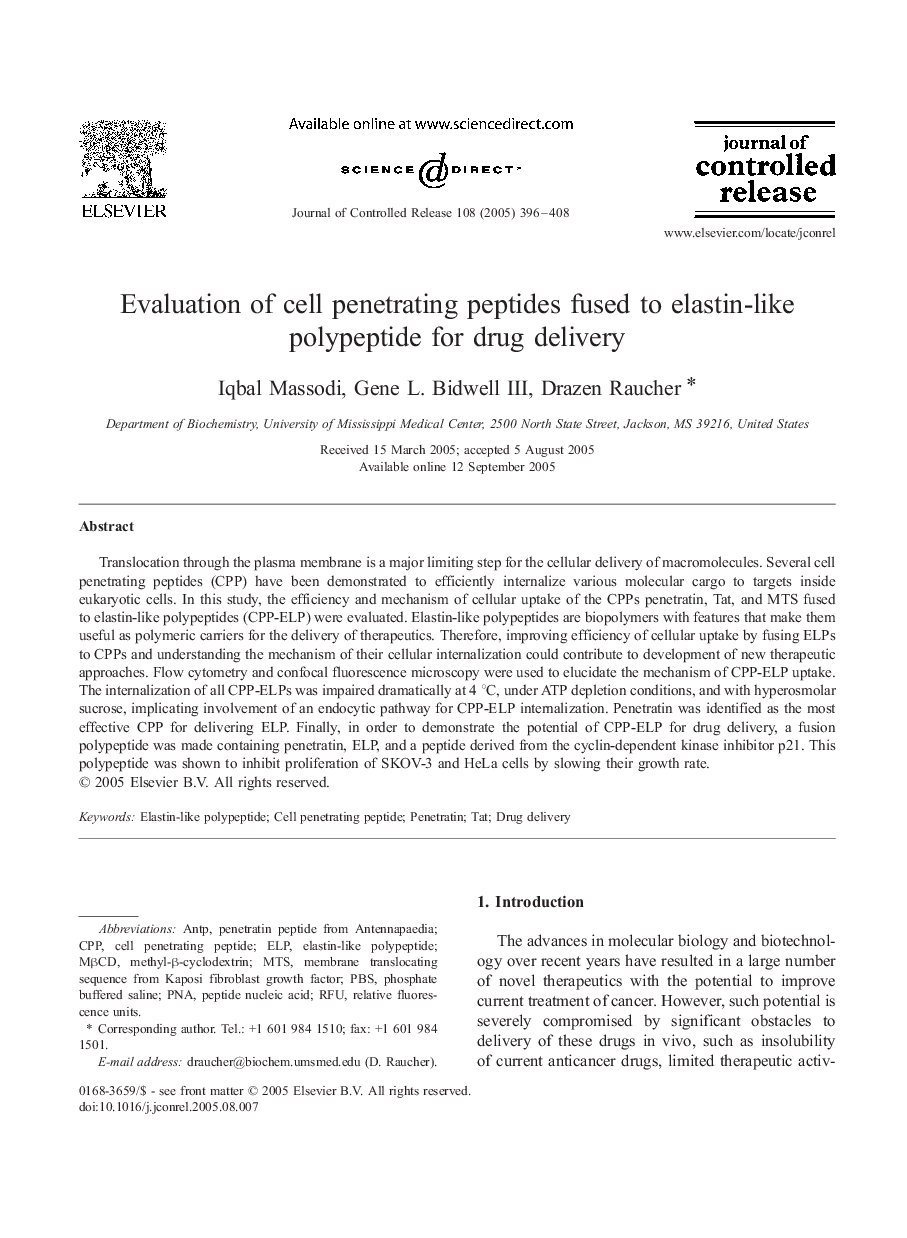| Article ID | Journal | Published Year | Pages | File Type |
|---|---|---|---|---|
| 9774627 | Journal of Controlled Release | 2005 | 13 Pages |
Abstract
Translocation through the plasma membrane is a major limiting step for the cellular delivery of macromolecules. Several cell penetrating peptides (CPP) have been demonstrated to efficiently internalize various molecular cargo to targets inside eukaryotic cells. In this study, the efficiency and mechanism of cellular uptake of the CPPs penetratin, Tat, and MTS fused to elastin-like polypeptides (CPP-ELP) were evaluated. Elastin-like polypeptides are biopolymers with features that make them useful as polymeric carriers for the delivery of therapeutics. Therefore, improving efficiency of cellular uptake by fusing ELPs to CPPs and understanding the mechanism of their cellular internalization could contribute to development of new therapeutic approaches. Flow cytometry and confocal fluorescence microscopy were used to elucidate the mechanism of CPP-ELP uptake. The internalization of all CPP-ELPs was impaired dramatically at 4 °C, under ATP depletion conditions, and with hyperosmolar sucrose, implicating involvement of an endocytic pathway for CPP-ELP internalization. Penetratin was identified as the most effective CPP for delivering ELP. Finally, in order to demonstrate the potential of CPP-ELP for drug delivery, a fusion polypeptide was made containing penetratin, ELP, and a peptide derived from the cyclin-dependent kinase inhibitor p21. This polypeptide was shown to inhibit proliferation of SKOV-3 and HeLa cells by slowing their growth rate.
Keywords
Related Topics
Physical Sciences and Engineering
Materials Science
Biomaterials
Authors
Iqbal Massodi, Gene L. III, Drazen Raucher,
